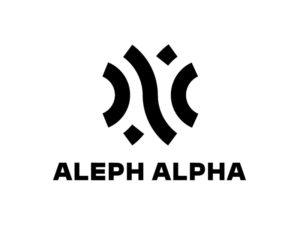Key Takeaways
- 92 % of German executives plan to raise AI spending in 2026, many by more than 25 % [^1][^6].
- The federal government has earmarked €1.6 billion for AI in 2025, a twenty‑fold increase since 2017 [^1][^3].
- Major sectors receiving funds include manufacturing, automotive, finance and SMEs, with a strong focus on productivity, automation and talent shortages [^4][^9].
- Regulatory uncertainty, especially the EU AI Act, and a shortage of skilled workers remain the top barriers [^2][^5][^7].
- Initiatives such as GAIA‑X, Catena‑X and AI‑focused training programmes aim to turn Germany into an “AI‑nation” [^10][^8].
Introduction
German companies are dramatically increasing their commitment to artificial intelligence (AI). A Slalom study shows that 92 % of executives intend to raise their AI budgets in 2026, with more than half planning increases of over 25 % [^1]. This surge follows a series of policy moves, large‑scale public funding, and growing corporate confidence that AI can address chronic productivity gaps and skill shortages.
AI Budget Surge and Government Funding
The German federal government allocated €1.6 billion to AI in 2025, a budget that has grown more than twenty‑fold since 2017 [^1][^3]. This “AI action plan” funds research, high‑performance computing, and pilot projects across industry. Chancellor Friedrich Merz has pledged to cut bureaucracy and accelerate AI‑driven digitalisation as part of a broader “modernisation agenda” [^6].
“We are of course aware of the problems facing the German economy at the moment, but we aspire to return to the top.” – Friedrich Merz, German Chancellor [^6]
Where Is the Money Flowing?
Investment data point to several hotspots:
- Manufacturing & Industry 4.0: AI is used for predictive maintenance, quality control and resource optimisation; 42 % of industrial firms report AI use in production [^4].
- Automotive: High‑value AI applications include supply‑chain analytics, carbon‑footprint tracking and autonomous‑driving research, supported by the Catena‑X data‑space initiative [^10][^9].
- Financial Services: 73 % of banks and insurers have deployed AI for risk management, fraud detection and process automation, though compliance with the EU AI Act adds complexity [^8][^9].
- SMEs and “Hidden Champions”: Though overall adoption is lower than in large corporations, AI‑using SMEs report higher innovation rates and profitability [^4][^9].
- Start‑up Ecosystem: Venture capital is flowing into AI start‑ups, exemplified by Deutsche Telekom’s T‑Capital investment in the Berlin‑based n8n platform [^5].
Regulatory Landscape: The EU AI Act
The EU AI Act, effective August 2024, classifies many AI applications as “high‑risk”, imposing transparency, documentation and conformity‑assessment obligations [^6][^7]. German firms cite legal uncertainty (82 %) and data‑protection requirements (73 %) as the most significant obstacles to AI rollout [^2][^5]. While the regulation creates compliance costs, it also offers a “Trusted AI” label that could become a market differentiator for German exporters [^10].
Talent Shortage and Cultural Factors
AI expertise remains scarce: 60 % of companies report a lack of in‑house talent, and many fear a brain drain to the US and Switzerland [^5][^7]. The German “cautious” corporate culture, coupled with strict data‑privacy norms, can slow AI adoption compared with more risk‑tolerant markets [^2][^8]. National initiatives – the National Weiterbildungsstrategie, expanded AI professorships and industry‑wide training programmes – aim to close the skills gap [^10].
Strategic Initiatives Shaping an AI‑First Economy
Key programmes are designed to translate research into commercial value:
- GAIA‑X and Catena‑X: Federated, sovereign data‑infrastructure projects that enable secure data exchange across sectors, particularly automotive [^10][^9].
- Green‑AI Hub: Focuses on energy‑efficient AI models and sustainable computing, addressing the high power demand of large‑scale AI [^10].
- AI‑Made‑in‑Germany Label: A quality seal intended to reassure global partners of compliance and reliability [^1][^3].
Conclusion
Germany’s AI spending is accelerating rapidly, driven by government funding, corporate ambition and a strategic push to become an “AI nation”. While the influx of capital targets high‑impact sectors such as manufacturing, automotive and finance, success will hinge on navigating regulatory requirements, overcoming talent shortages and fostering a culture that embraces digital transformation. If these challenges are met, Germany could leverage its engineering pedigree and research excellence to secure a leading role in the global AI ecosystem.
References
- Franziska Müller (2025‑10‑01). “Germany is investing billions in AI – but who is making a profit?“. Euronews. Retrieved 2025‑10‑23.
- “Two of Germany’s largest firms are sounding the alarm about an AI bubble” (2025‑10‑21). TheLocal.de. Retrieved 2025‑10‑23.
- “Germany invests €1.6 billion in AI but profits remain uncertain” (2025‑10‑02). Digital Watch Observatory. Retrieved 2025‑10‑23.
- “Companies in Germany Increasingly Relying on Artificial Intelligence” (2025‑06‑16). ifo Institute. Retrieved 2025‑10‑23.
- “Deutsche Telekom’s T.Capital invests in German AI tech startup n8n” (2025‑10‑10). Lightreading. Retrieved 2025‑10‑23.
- Murray, Miranda (2025‑10‑01). “German government looks to AI and cutting red tape to revive economy“. Reuters. Retrieved 2025‑10‑23.
- “AI in the 2025 coalition agreement: what can companies expect now?” (2025‑04‑28). CMS LawNow. Retrieved 2025‑10‑23.
- “Could AI help to save Germany’s economy?” (2024‑11‑22). BBC News (YouTube). Retrieved 2025‑10‑23.
- “Top 10 AI prompts and use cases in the financial services industry in Germany” (2025‑09‑07). Nucamp. Retrieved 2025‑10‑23.
- “The AI imperative: Germany’s path to an AI‑first economy” (2025‑08‑10). Bloola. Retrieved 2025‑10‑23.



